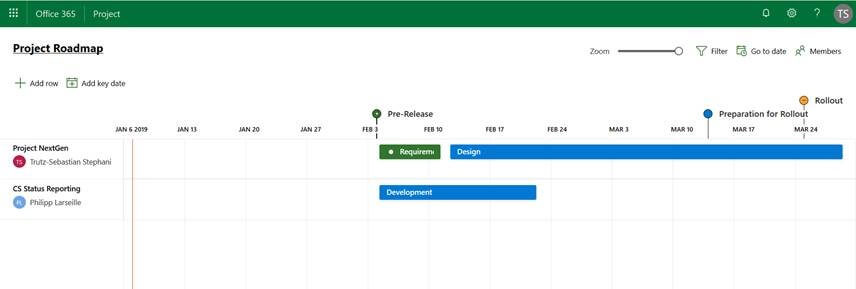During the Ignite Conference in September 2018, Microsoft announced a new feature for Microsoft Project called Roadmap. The feature provides users with an overview of project information from several projects within a project portfolio, even if different Office 365 PM Tools are used. The information is visualized in a swim lane-based view and can be shared with colleagues within an organization. The Roadmap feature is directly available on the Microsoft Project Home page. In this blog post, we will discuss relevant aspects around this new feature.
Overview of Roadmap
To handle the complexity of monitoring many projects or tasks, Roadmap increases transparency and supports decision making based on the well-crafted visuals. Creating a Roadmap is a very simple process.
Display projects or individual tasks
You start by inserting tasks and milestones from existing projects in Azure DevOpsi or Project Onlineii by connecting them to a roadmap. For the design of your rows, you can apply your preferred methodology (e.g. major phases, stage gates, iterations) and make the tool work your way.
Assign a status for relevant items
You can assign a status for each individual row to get a better overview of the tasks inside your Roadmap. Choose between not set, on track, at risk, high risk and done. This is especially relevant for top-level management and program reporting.
Highlight your key dates
Highlighting important events like a roll-out date can be done by adding them to the Roadmap. They show up at the top of your roadmap and provide a visualization of important dates that appears across projects.
Share your Roadmap
Finally, you can share a roadmap with others, based on Office 365 groups. Just add members and keep your stakeholders always up-to-date.
Extensibility
Roadmaps is based on the Power Platform and its data is stored in the Common Data Service. This allows you to create custom reports in PowerBI and custom status reporting scenarios us-ing Flow, e.g. setting the status of your roadmap items automatically or automating the setup of a roadmap. You will hear more about this in future posts!


